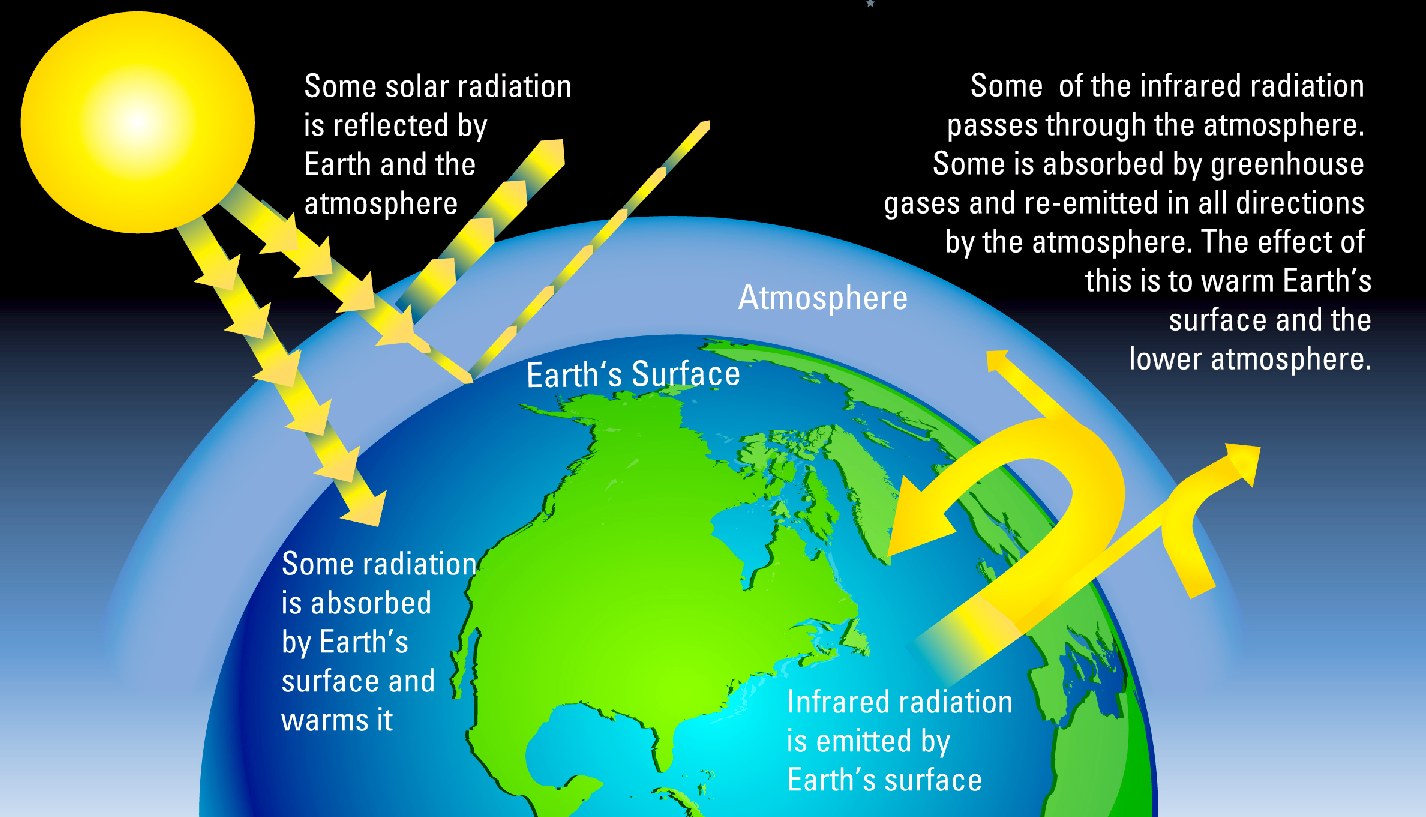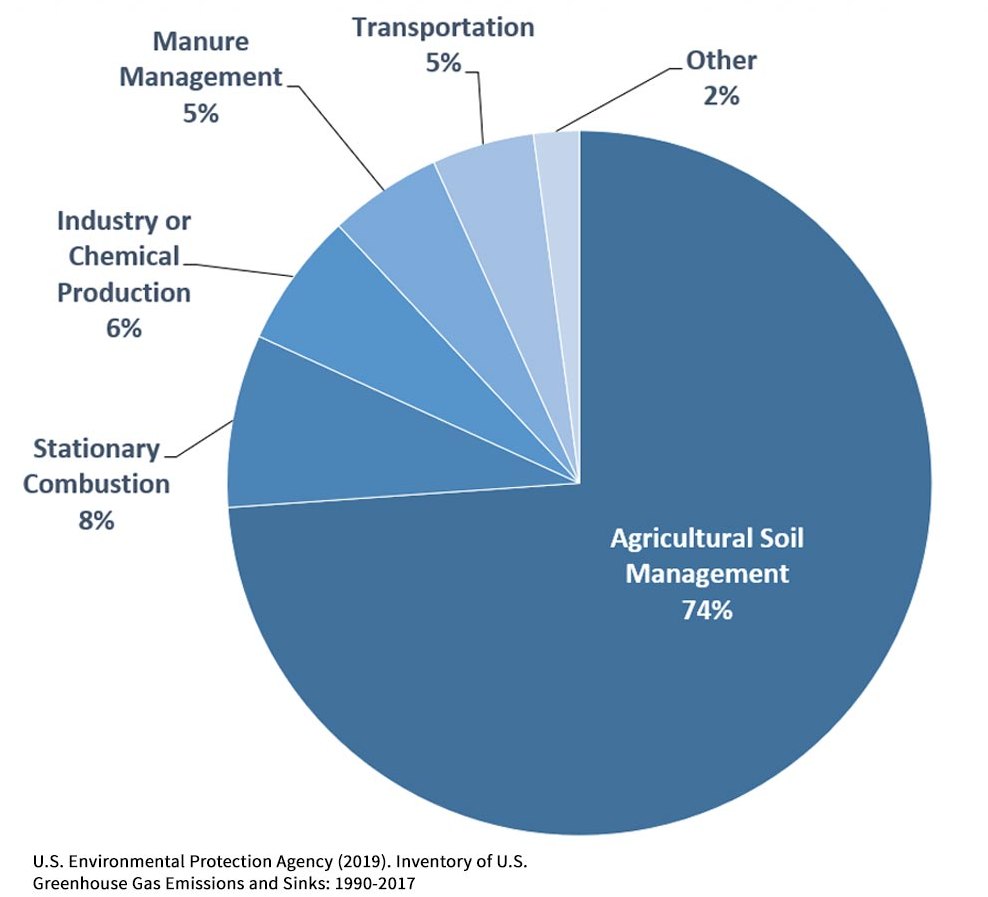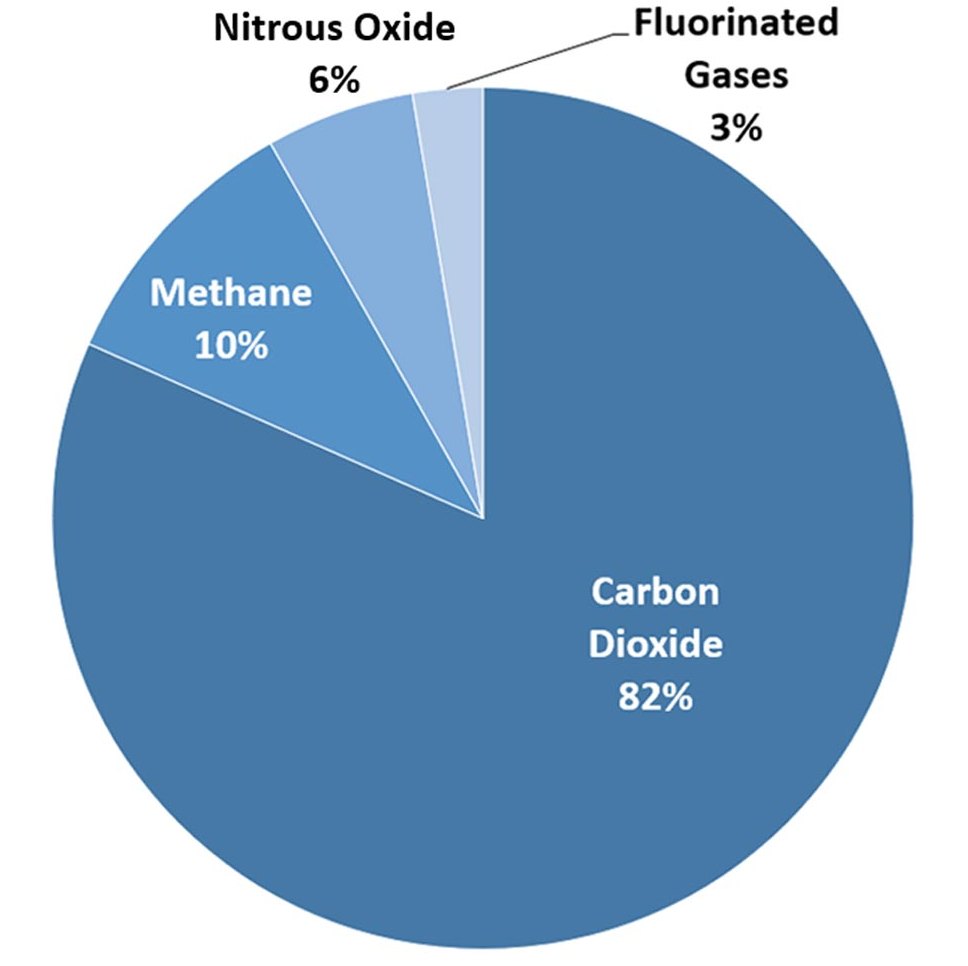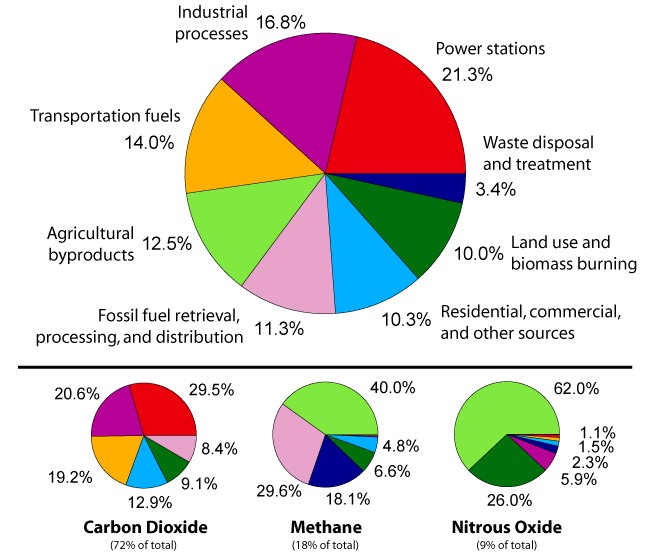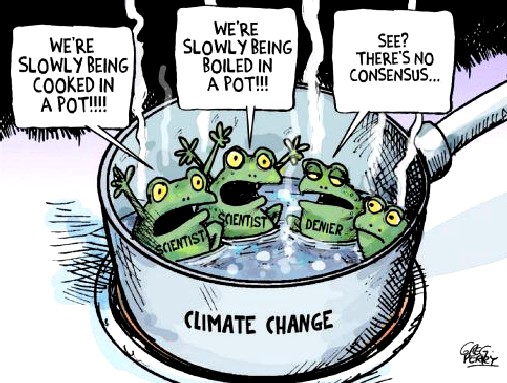|
NITROUS OXIDE
Pleas use our A-Z INDEX to navigate this site
JUST LIKE A GLASS BOWL - Radiation from the sun would be reflected out into space, but with more greenhouse gases in the atmosphere some radiated heat is absorbed and re-emitted back to earth just as if we lived in a greenhouse.
By far the biggest contributor to global warming after water vapour, is Carbon Dioxide. We cannot do much about water vapour where around 71% of the Earth's surface is water. But, the rate of evaporation is dependent on temperature, hence the other gases that contribute to the glass-like bubble we live in are very important.
Human activities such as agriculture, fuel combustion, wastewater management, and industrial processes are increasing the amount of N2O in the atmosphere.
Nitrous oxide is also naturally present in the atmosphere as part of the Earth's nitrogen cycle, and has a variety of natural sources. Nitrous oxide molecules stay in the atmosphere for an average of 114 years before being removed by a sink or destroyed through chemical reactions.
The impact of 1 pound of N2O on warming the atmosphere is almost 300 times that of 1 pound of carbon dioxide.
Nitrous oxide is a colourless gas with a slightly sweet odour and taste. It is legitimately used to numb pain during medical procedures such as dental work, in engines to increase their power output, and in whipped cream aerosol cans to prevent the cream going ‘bad’.
Nitrous oxide has significant global warming potential as a greenhouse gas. On a per-molecule basis, considered over a 100-year period, nitrous oxide has 298 times the atmospheric heat-trapping ability of carbon dioxide (CO2); however, because of its low concentration (less than 1/1,000 of that of CO2), its contribution to the greenhouse effect is less than one third that of carbon dioxide, and also less than water vapour and methane.
On the other hand, since 38% or more of the N2O entering the atmosphere is the result of human
activity, and its concentration has increased 15% since 1750, control of nitrous oxide is considered
to be play and important part of efforts to curb greenhouse gas emissions.
LAUGHING GAS
COMMON CONFUSION
Nitrogen makes up 78% of the Earth’s atmosphere and is an inert gas which is colourless, odourless and tasteless. It is commonly used in the beverage industry in beer, wine and juice production. The gas is predominantly used to prevent oxidation which can affect the taste and quality of the beverage and is also used to dispense beer. In this form Nitrogen works for us.
There seems to be confusion over the difference between nitrogen and nitrous oxide (N2O), more commonly known as laughing gas.
This is a misconception, as although they both contain the element
nitrogen, they are two different gases.
N2O
- Formula : 2 Molecules of Nitrogen with 1 Molecule of Oxygen.
GREENHOUSE GASES
The major greenhouse gases are water vapour, which causes about 36–70% of the greenhouse effect; carbon dioxide (CO2), which causes 9–26%; methane (CH4), which causes 4–9%; nitrous oxide (N2O) that accounts for about 5.6 percent of greenhouse gas emissions from human activities and ozone (O3), which causes 3–7%.
THE CAUSES IN SECTORS - Transportation and energy for living are the main causes of greenhouse gas build up in the atmosphere as carbon dioxide and nitrous oxides, with agriculture loading us with methane and more nitrous oxides. Hence, we need to revise our eating habits and switch to renewable energy for our cars and industry as quickly as possible.
The greenhouse effect is the process by which absorption and emission of infrared radiation by gases in a planet's atmosphere, warm its lower atmosphere and surface, to include warming the oceans and melting the ice caps.
LINKS & REFERENCE
https://www
Pleas use our A-Z INDEX to navigate this site
This website is provided on a free basis as a public information service. copyright © Climate Change Trust 2019. Solar Studios, BN271RF, United Kingdom.
|
